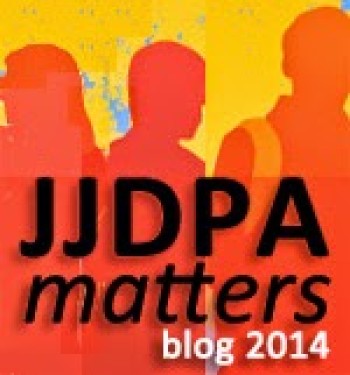Valuing Family, Community and Youth: Reauthorize the JJDPA

This post is part of the JJDPA Mattersblog, a project of the Act4JJ Campaign with help from SparkAction. The JJDPA, the nation's landmark juvenile justice law, turns 40 this September. Each month leading up to this anniversary, Act4JJ member organizations and allies will post blogs on issues related to the JJDPA. To learn more and take action in support of JJDPA, visit the Act4JJ JJDPA MattersAction Center, powered by SparkAction.
It has been twelve years since Congress reauthorized the Juvenile Justice Delinquency Prevention Act (JJDPA), the nearly 40-year old federal legislation that recognizes the importance of preventing youth involvement in the juvenile justice system and establishes federal protections for youth in the system.
The JJDPA is long overdue for reauthorization.
Despite the many effective reforms spearheaded by the JJDPA, 70,000 youth are still incarcerated in jails and prisons on any given day. Some are housed outside of their home states and far away from their families, in private facilities with little oversight.
All of these out-of-home placements have high price tags. Incarcerating youth has a fiscal price tag that averages $90,000 per year. The social costs—which include separation from family and community and barriers to education and work that can lead to chronic disconnection—are even higher. And we know that kids of color, kids with developmental disabilities and LBTQ youth are more likely to be incarcerated and be abused in facilities.
The JJDPA was last reauthorized by Congress in 2002. We now know a lot more than we did twelve years ago about what’s best for kids. For example, we learned that delinquent youth are more likely to die violent deaths, and that brain development that helps one understand right from wrong continues until early adulthood. We also have over a decade of additional evidence that incarceration can be harmful to youth and that community-based programs are far more effective.
In June, we at Youth Advocate Programs (YAP) added to that growing body of research with the release of our report, Safely Home.
In this report, we emphasize the need for community-based programs for youth with complex needs and demonstrate that reform is possible by highlighting “bright spots” from around the country where state and county leaders have worked with communities to safely reduce youth incarceration by building continuums of support for youth with varying needs.
In addition, the report finds that 8 out of 10 kids in intensive community-based alternatives to prison or jail ended up arrest-free and 9 and out of 10 remained living in their homes with their families.
If public safety and strengthening families and communities are a priority, Congress will reauthorize the JJDPA so that more programs that produce these outcomes can keep kids safe, at home and out of the system. The entire law is about protecting children and preventing delinquency because we know, and Congress knows, it is best for kids to be with their families, supported and connected to pro-social activities, people and places.
We can serve three to four kids in the community for the same price as locking one up. So why don’t we?
Better outcomes for youth and increased community safety are clearly important priorities, but that’s not all that reauthorizing the JJDPA can do. It would also help shape federal juvenile justice policy and incentivize a more cost effective approach to juvenile justice at a time of budget austerity for Congress and nearly every statehouse in the country. The cost to incarcerate a youth averages $250 per day, although in some places it’s as high as $667 per day. An intensive community-based program, on the other hand, costs on average $75 per day. That means we can serve three to four kids in the community for the same price as locking one up. So why don’t we?
We’ve learned a lot since 2002 and some states have used the JJDPA to implement sensible reforms. Yet for the 70,000 youth incarcerated tonight, their families, and their communities, reauthorizing the JJDPA cannot come soon enough.
For some youth, reauthorizing the JJDPA will mean the difference between whether they get a chance to complete high school and have productive futures or begin an arduous, expensive and wasteful path into the criminal justice system or chronic disconnection that will cost society in other ways. It is incumbent upon us to make sure they have every opportunity to be on the better path.
To really prevent juvenile delinquency, achieve the best outcomes for youth and promote safe communities informed by what we have learned in the last 12 years, Congress must adequately fund and re-authorize the JJDPA.
- Tags: Act4JJ, JJDPA, Spark Action

